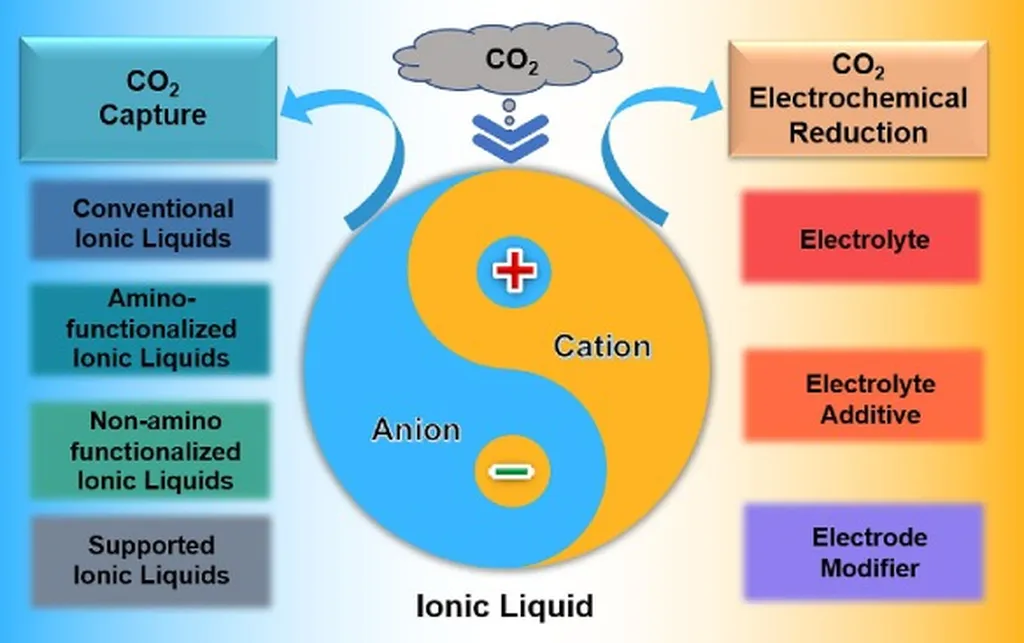In the heart of Saudi Arabia, researchers are unlocking new possibilities for the energy sector, blending the urgent needs of enhanced oil recovery (EOR) with the critical mission of carbon dioxide (CO2) sequestration. Abdul Haris Salam, a petroleum engineering expert from King Fahd University of Petroleum & Minerals, is at the forefront of this innovative work, exploring the potential of ionic liquids (ILs) to revolutionize how we extract oil and manage carbon emissions.
Carbonate reservoirs, which hold a significant portion of the world’s remaining oil, present a formidable challenge. Their complex pore structures, low permeability, and oil-wet characteristics make them difficult to exploit. Add to this the operational hurdles like phase behavior intricacies, water-rock-gas interactions, and the presence of impurities such as hydrogen sulfide (H2S), and you have a recipe for complexity. However, Salam and his team see an opportunity in these challenges, proposing a multifunctional solution that could reshape the energy landscape.
Ionic liquids, a class of salts that are liquid at room temperature, have unique properties that make them ideal for addressing these issues. “ILs offer a tunable nature, thermal stability, and near-zero vapor pressure,” Salam explains. “These characteristics make them highly effective in modifying wettability, reducing interfacial tension, and improving CO2 adsorption and dissolution under harsh reservoir conditions.”
The potential commercial impacts are substantial. By enhancing oil recovery, ILs could significantly boost production from carbonate reservoirs, tapping into reserves that were previously considered uneconomical to extract. Simultaneously, their ability to improve CO2 sequestration means that these operations could become part of a broader strategy to reduce greenhouse gas emissions, aligning with global efforts to combat climate change.
Salam’s research, published in the journal Carbon Capture Science & Technology, identifies the specific challenges associated with carbonate reservoirs and suggests how ILs could address these issues. The study demonstrates the potential of ILs in sustainable EOR and the development of efficient carbon management approaches. “The integration of ILs into EOR processes could lead to more efficient and environmentally friendly operations,” Salam notes. “This could be a game-changer for the energy sector, providing a dual benefit of increased oil production and reduced carbon footprint.”
The implications for the energy sector are far-reaching. As the world seeks to balance the need for energy with the imperative to reduce emissions, technologies like ILs could play a pivotal role. They offer a pathway to more sustainable oil extraction, aligning economic interests with environmental responsibility. Moreover, the tunable nature of ILs means that they can be tailored to specific reservoir conditions, making them a versatile tool in the energy industry’s arsenal.
As the energy sector continues to evolve, the work of Salam and his team could shape future developments in EOR and CO2 sequestration. Their research highlights the potential of ILs to overcome the unique challenges of carbonate reservoirs, paving the way for more efficient and sustainable energy production. In an industry where innovation is key to staying competitive, the exploration of ILs represents a significant step forward, offering a glimpse into a future where economic viability and environmental stewardship go hand in hand.

